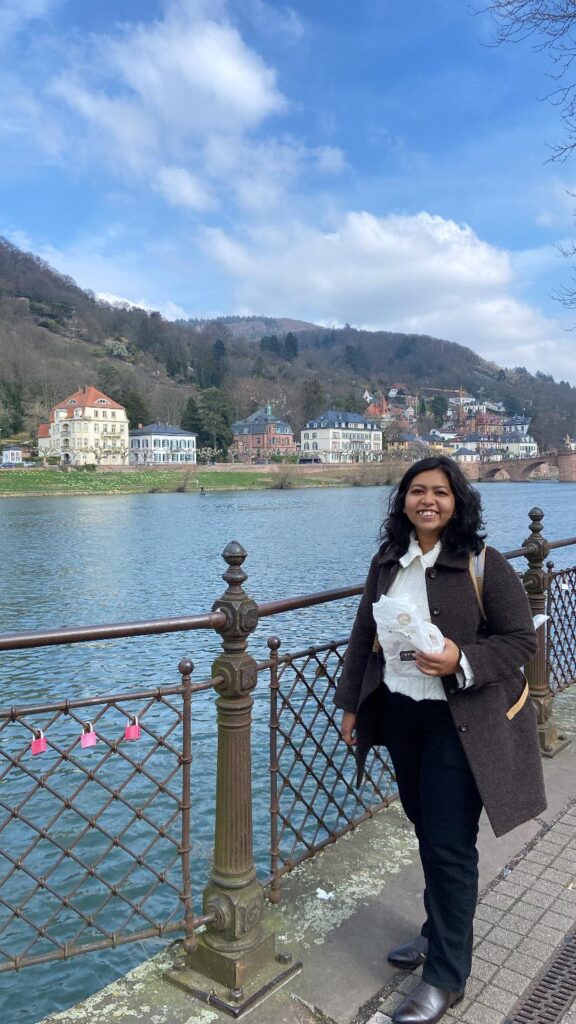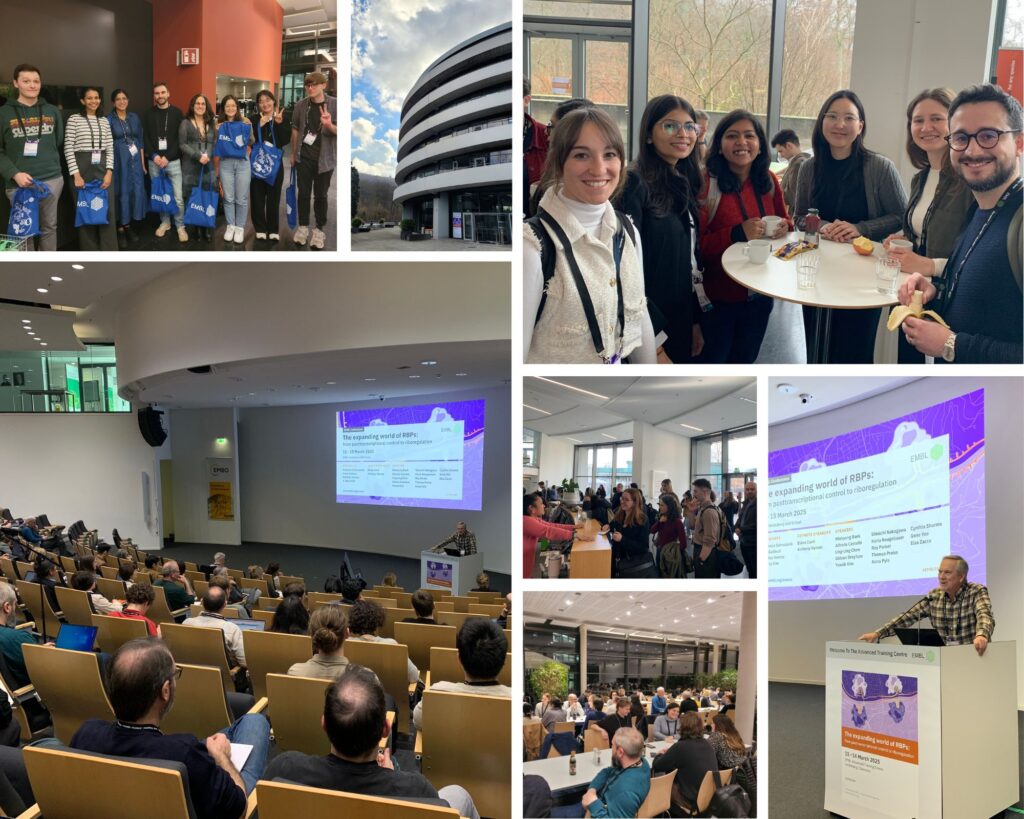An exciting new take into the world of RNA-binding proteins
Written by event reporter Ayushi Rehman
At the outset, I would like to thank the team of EMBL Events for giving me the opportunity to attend the conference and for providing a platform to share my view on the EMBL Conference ‘The expanding world of RBPs: from posttranscriptional control to riboregulation’. When we investigate RNA-binding proteins, we basically interest ourselves in two macromolecules: RNA and protein. This conference was a constant reminder through all the sessions that it is best not to just stick with the name but rather go deep and get a better understanding of RBPs, their non-canonical roles, their not-so-RNA-binding nature, and the other heroes of RBPs: different types of RNAs.

The amazing lineup of speakers gave the audience a full-blown experience of RBPs – starting right from the detailed capture and analysis of pre-translating complexes to a sneak peek into alternate exon-junction complex compositions. Moving on, talks discussed the phase condensation properties of RBPs, their role in neurogenerative diseases, stress granule formation, and the role of protein-RNA interaction in these condensates. We had five detailed sessions over the course of four days, including RBPs, RNA-protein interactions, and different tools that can help us capture RNA-protein interactions and model the RNA conformations in RNA-protein interactions. As someone who is trying to put a step forward in translational research, I was very excited by the session on ‘Disease RBPs and new therapeutic angles’.
Being an event reporter did make me more proactive towards the talks, and there are points from each session that made me put on my thinking cap. I would like to highlight some of these here.
Session 1: Systems Biology of RBPs (experimental multi-omics and data analysis)
This session was chaired by Elsa Zacco and focused on different pipelines to detect RNA-protein interactions. Two interesting techniques were CoSTseq to detect the RNA-folding patterns during transcription, which enabled the detection of different conformations formed by either rRNA or mRNA based on the polymerase they are associated with. The other interesting technique was an extension of the RNA-interactome capture, to study phosphorylated proteins associated with RNAs. The session also included talks on transposable elements and their gene regulatory role mediated via RBPs.
Session 2: Structure and function of RBPs (including modelling/AI)
In this session, chaired by Roy Parker, we had some interesting insights on analysing structures of regulatory RNA sequences and their subsequent use in a therapeutic context. We were familiarised with the concept of “dual-purpose cipher”, wherein the same RNA sequence can contain different information. Moving on, the challenge of detecting protein-nucleic acid structures was discussed. RoseTTAFoldNA is a state-of-the-art pipeline to detect accurate interactions between proteins and nucleic acids, and the progress it has made in this challenging direction was highlighted. Additionally, the non-canonical role of the RBP eIF2A in centrosomal binding and cell migration was elaborated on. The session ended with a description of a new pathogenesis mechanism in the case of Alzheimer’s disease. This was the detection of chimeric RNAs, specifically TOMM40-APOE chimeric RNAs formed via transcriptional readthrough. These chimeric mRNAs were found to be produced in stressed cells and colocalise within mitochondria.
Session 3: Biological condensates
This session primarily focused on the importance of RBPs and RNA during condensate formation. The session highlighted the importance of RBPs in neurodegenerative disorders like tauopathies and amyotrophic lateral sclerosis (ALS), cellular stress, and inflammatory responses. The crucial take-home message for me in this session was the important roles of RBPs-RNA during phase separation.
Session 4: Disease RBPs and new therapeutic angles
Probing deeper into therapeutic angles, we got to know that RNA-aptamers can be designed using the tool catRAPID to target TDP-43 aggregates and prevent aggregate formation during ALS. The utlisation of AUF1 gene therapy to stabilise ARE-mRNAs in muscle wasting diseases is also a very promising direction towards the use of RBPs as therapeutics. This session highlighted the crucial role of RBPs in diseases and the progress we can make in the field of RNA-based therapeutics.
Session 5: New technologies to study RNA-protein interactions
The last session, albeit one of the most important sessions, was about the latest interventions in protein-RNA interaction technologies. We were told about the dsRNA binding proteins, which can bind to double-stranded RNAs (dsRNAs). The dsRNAs are long RNAs that can trigger an immune response, and not much is known about the specificity of interaction between dsRBPs and dsRNAs. Three other very promising techniques described were SoniCLIP, coCLIP, and the HT-RNA-Recruit assay.
Apart from the scientific talks, we had two detailed and intriguing poster sessions, the breadth of which is beyond the scope of this report. The conference team was highly helpful and supportive, and as a participant I had enough opportunity to discuss with fellow researchers and esteemed speakers. The platform was highly collaborative and motivating. On a happy note, I would like to say that given a chance, it would be thrilling to be a part of this conference again, which will most likely happen at KAUST next. The #EMBLRBP conference was an insightful experience and made me proud to be an RBP researcher. Once again, a huge shoutout to the entire team at EMBL Events for curating this super event!

The EMBL Conference ‘The expanding world of RBPs: from posttranscriptional control to riboregulation’ took place from 11 – 14 March 2025 at EMBL Heidelberg and virtually.
Did you know that you can become an event reporter and receive a conference fee waiver in exchange? Find out how to do that by visiting our Become an event reporter page.